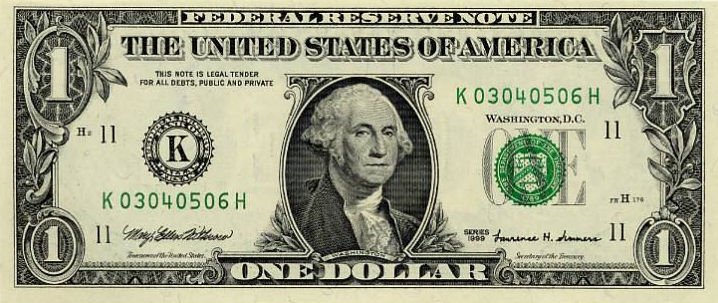US Congress is kicking around the idea of replacing the dollar bill with dollar coins, as federal auditors have determined that the move could save taxpayers roughly $4.4 billion over the next 30 years.
Experts say that while it would be expensive to replace machines, the fact that coins can stay in circulation for up to 30 years, while paper bills only have 4 to 5 year lifespans, outweigh the initial costs.
“We’ve never bitten the bullet to remove the $1 bill as every other Western economy has done,” said former director of the U.S. Mint Philip Diehl said.
“If you did, it would have the same success the Canadians have had.”
Supporters of the idea frequently point our northern neighbor as an example of switchover than went well. Canada introduced its now popular $1 piece, affectionately nicknamed the “Loonie”, and found it so popular that the country also went to a $2 coin called the “Toonie”.
“I don’t know anyone who would go back to the $1 and $2 bills,” Rep. Bill Huizenga of Michigan said at a House subcommittee exploring ways to change how money is produced in this country.
Meanwhile, vending machine operators have long championed the use of $1 coins because they don’t jam the machines, cutting down on repair costs and lost sales.
Still, at a time when cost-cutting measures seem to be something of a necessity, few Americans seem to be behind the idea of replacing lightweight paper bills with heavier coins.

In the past five years, the U.S. Mint has produced 2.4 billion Presidential $1 coins, but most are stored by the Federal Reserve, and production was suspended about a year ago.
Strong opposition to the change has been seen in Congress as well. Rep. Lacy Clay of Missouri, another member of the subcommittee, said men don’t like carrying a bunch of coins around in their pocket or in their suits. And Rep. Carolyn Maloney of New York said that $1 coins have proved too hard to distinguish from quarters.
“If the people don’t want it and they don’t want to use it,why in the world are we even talking about changing it?,” she said.
But the Government Accountability Office’s Lorelai St. James say the benefits of the switchover are hard to argue against and that they would only come through if the dollar bill is completely eliminated and the public educated about the benefits of the switch.
“We continue to believe that replacing the note with a coin is likely to provide a financial benefit to the government,” she said.
It seems, however, that the more likely option is that production methods of existing coins will be changed. As it stands, it take more than 2 cents to make a penny and more than 11 cents to make a nickel, thanks to rising prices of copper and nickel.
The subcommittee also heard suggestions to replace these more expensive metals with a combination of steel, aluminum and zinc, which would cost considerably less. Rep. Steve Stivers of Ohio put that number at nearly $200 million a year.
Congress approved a similar measure nearly 50 years when they took precious silver out of dimes and quarters as well as cut down production of 50-cent coins by half.
The U.S. Mint is expected to present a report in mid-December that will detail the results of nearly 18 months of work exploring a variety of new metal compositions and evaluating test coins for attributes as hardness, resistance to wear, availability of raw materials and costs.
Richard Peterson, the Mint’s acting director, noted that “several promising alternatives” were found.
